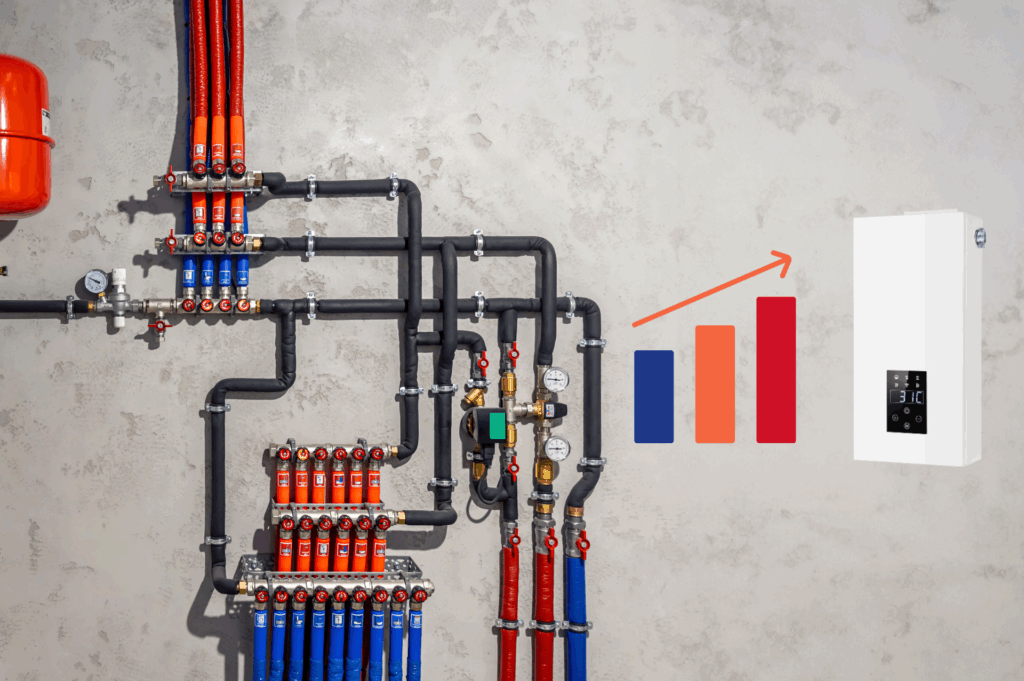What are the Global Trends for Electric Boilers in 2025?
As the world moves toward cleaner, more efficient energy solutions, electric boilers are emerging as a central player in the shift away from fossil fuels. Supported by government incentives, smart tech, and evolving building regulations, electric boilers are no longer a niche—they’re the future.
Here are six global trends defining the electric boiler market in 2025.

Electrification Accelerated by Climate Policies
With countries tightening carbon emissions targets, traditional gas and oil boilers are being phased out. In Europe, several governments have introduced bans on fossil-fuel heating systems in new buildings, pushing electrification to the forefront.
What’s driving it?
- Net-zero targets
- Carbon taxes and penalties
- Green subsidies for electric heating systems
Countries like Germany, the UK, and the Netherlands are leading the way with rebate programs and building code changes that favor electric solutions.
Electric Boilers Integration with Renewable Energy Systems
Electric boilers are increasingly being used with solar panels and wind energy, not just as heating systems but as thermal energy storage units. They act as buffers in smart grids, helping balance electricity supply during off-peak hours.
Why it matters:
- Supports grid flexibility
- Reduces dependence on gas or oil backups
- Enhances the value of home and commercial solar systems
Smarter Controls, Greater Efficiency
2025 electric boilers are smarter than ever. Wi-Fi connectivity, mobile apps, and integration with home automation systems are becoming standard features. Users can remotely adjust temperatures, set schedules, and monitor energy consumption in real time.
Emerging features:
- AI-based energy optimization
- Voice assistant compatibility (Alexa, Google Home)
- Automatic weather-based adjustments
This tech-driven approach not only improves comfort but also helps reduce waste and lower bills.
Compact, Efficient, and Modular Design
Modern electric boilers are smaller, quieter, and more energy-efficient. Advances in internal components and insulation mean today’s units require less space and offer faster heat-up times. Modular options are becoming popular for both residential and commercial applications.
Key features to watch:
- Wall-mounted and under-counter options
- Near-zero standby consumption
- Hybrid units combining electric and heat pump tech
These designs cater especially well to urban dwellings and renovations where space is limited.
Surge in Commercial & Industrial Adoption
While residential demand continues to grow, the commercial and industrial segments are quickly catching up. Businesses are replacing older fossil-fuel boilers with electric options to meet internal sustainability targets and comply with carbon reporting requirements.
Adoption sectors:
- Hotels and resorts
- Hospitals and healthcare centers
- Schools, offices, and government buildings
Electric boilers offer a scalable, low-maintenance alternative for hot water and space heating in high-demand environments.
Expanding Global Electric Boilers Market Footprint
The global electric boiler market is expected to grow steadily through 2025, especially in Europe, North America, and parts of Asia-Pacific. Developing countries are also skipping traditional gas infrastructure in favor of all-electric systems.
Key drivers:
- International green building codes
- Energy security concerns
- Improved manufacturing and supply chains
Conclusion: The Time for Electric Boilers Is Now
Electric boilers are stepping into the mainstream, driven by tech innovation and the global energy transition. In 2025, success in this market will go to the companies that adapt quickly by investing in smart features, efficient design, and flexible solutions that meet regional needs.
Whether you’re a manufacturer, installer, or property developer, staying ahead of these trends will help you deliver more value—and more comfort—to your customers.
